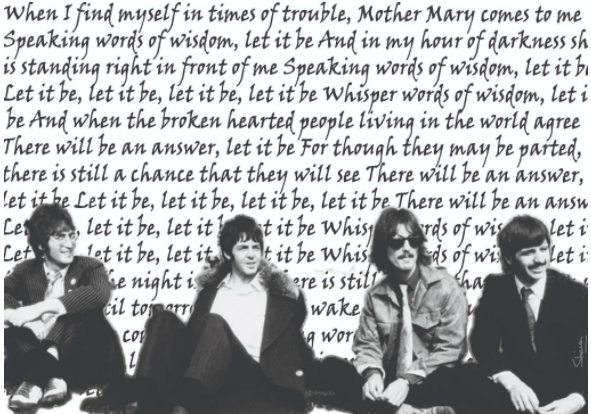Warning: Spoilers ahead
Before John Lennon, Paul McCartney, George Harrison, and Ringo Starr were The Beatles, they were The Quarrymen—a happy-go-lucky skiffle group. With Starr joining in 1962, The Quarrymen became The Beatles and catapulted into stardom. They will always be known for bringing some much-needed flair and gaiety to rock and roll in the 1960s.
In 1966, Lennon, with harmless intentions, declared The Beatles to be “more famous than Jesus,” sparking extensive outrage. Afterwards, The Beatles struggled to regain their rhythm, only performing once before breaking up. The weeks leading up to their final bow in 1969 were taped, and are now viewable as a docuseries. Directed by Peter Jackson, Get Back revives The Beatles’ last weeks together through hours of undisclosed tapings and audio recordings, initially conceived for the band’s 1970 documentary Let it Be, which was released alongside their 12th and final studio album of the same name. This mini-series is lengthy—consisting of three two-and-a-half to three-hour episodes—but enjoyable for any ‘60s to ‘70s era rock fan. The series was released on Disney+ over the course of Nov. 25-27.
The ultimate difference between Let it Be and Get Back is that the former is a documentary, and the latter is a documentary behind that documentary. The viewer is not watching The Beatles scramble to finish their penultimate album and prepare for their last live show; rather, they are practically with the band in London, sitting in Twickenham (and Apple) Studios, trying to piece together a perfect farewell as if it was their own. Get Back is a fly-on-the-wall experience, intimate and raw. The series is particularly difficult to watch because each artist is so clearly out of sync with one another that an immaculate ending is not feasible—the viewer watches on as The Beatles come to terms with this for themselves. Sandwiched between awkward moments are periods of brief levity, where the boys lounge and laugh while smoking like chimneys. These bits, however, are few and far between. Michael Edward Lindsay-Hogg, director of the Let it Be documentary, does an impeccable job capturing those shots—zooming in on Harrison’s face when his ideas were ignored, or capturing Lennon’s gaze being anywhere except where it should be. But, to fully appreciate these moments, the viewer must be completely engaged at all times; since the sound quality is lacking, some of the most decisive shots are completely silent. Get Back demands dedication and patience from viewers because of the eight-hour runtime. The series could be half as long without losing much substance, and it still would capture the discomfort of a band desperately trying to end on a high note.
The last hour of the series delights the viewer with footage from The Beatles’ final concert upon the rooftop of Apple Studios in London. The lead-up to the showing was messy, with the last-minute venue choice encapsulating the chaos of The Beatles’ last days together. Despite the organizational hurdles, the concert feels playful and irreverent, which was what made these artists famous in the first place. Lindsay-Hogg’s cinematography is phenomenal, from capturing footage of fans climbing to nearby rooftops, to honing in on McCartney’s eyes lighting up as he performs live for the first time in years. There is something profoundly cathartic, as a Beatles fan, to watch them perform “I’ve Got a Feeling” for the last time.
It’s no coincidence that Get Back was the album’s working name before it became Let it Be. The docuseries represents the trials and tribulations not only of being in a boy band for nearly a decade, but of realizing that nothing could be done to revive its spirit. The Beatles’ breakup is still widely misunderstood in the media, tainted by false speculation and racist underpinnings of John and Yoko Ono’s relationship. Get Back pulls back the curtain to reveal that no individual or isolated incident, nor problematic bandmate (or partner) alone led to their breakup. The real reason is quite simple: Like most good things, it had to come to an end.








